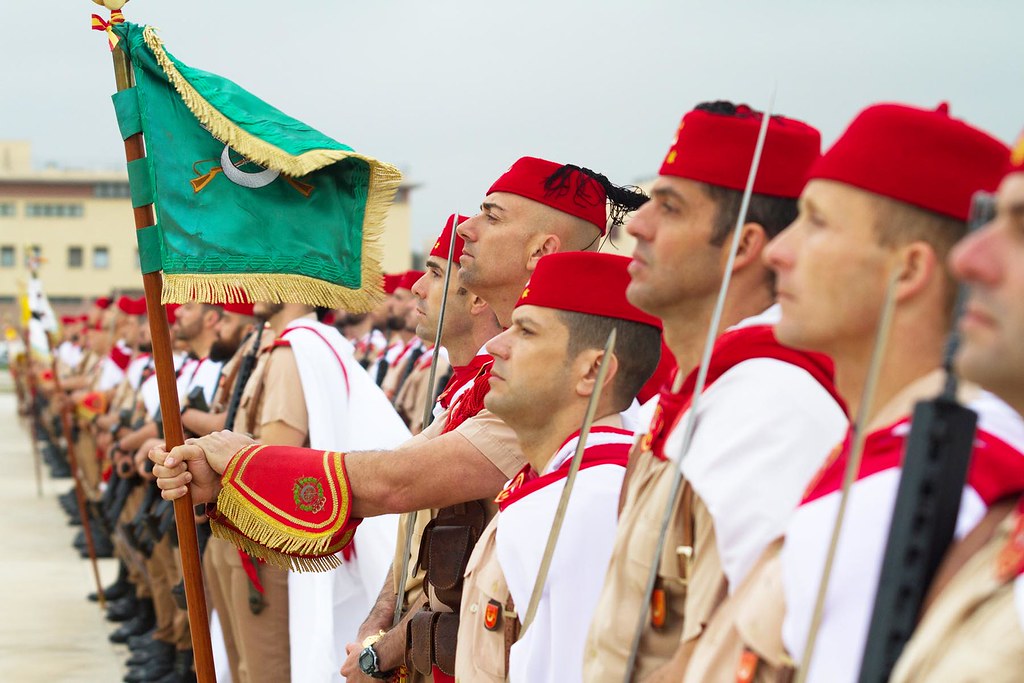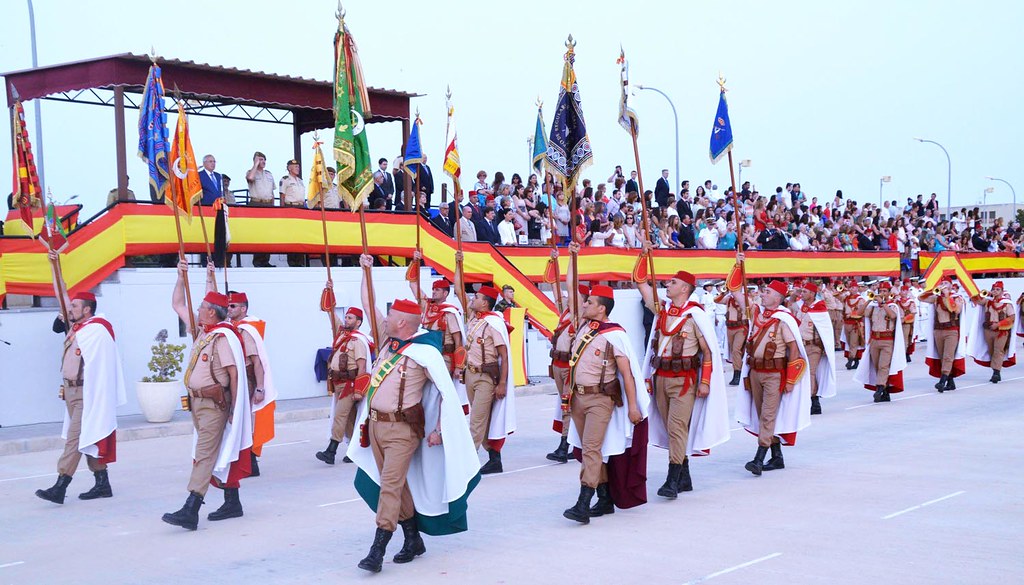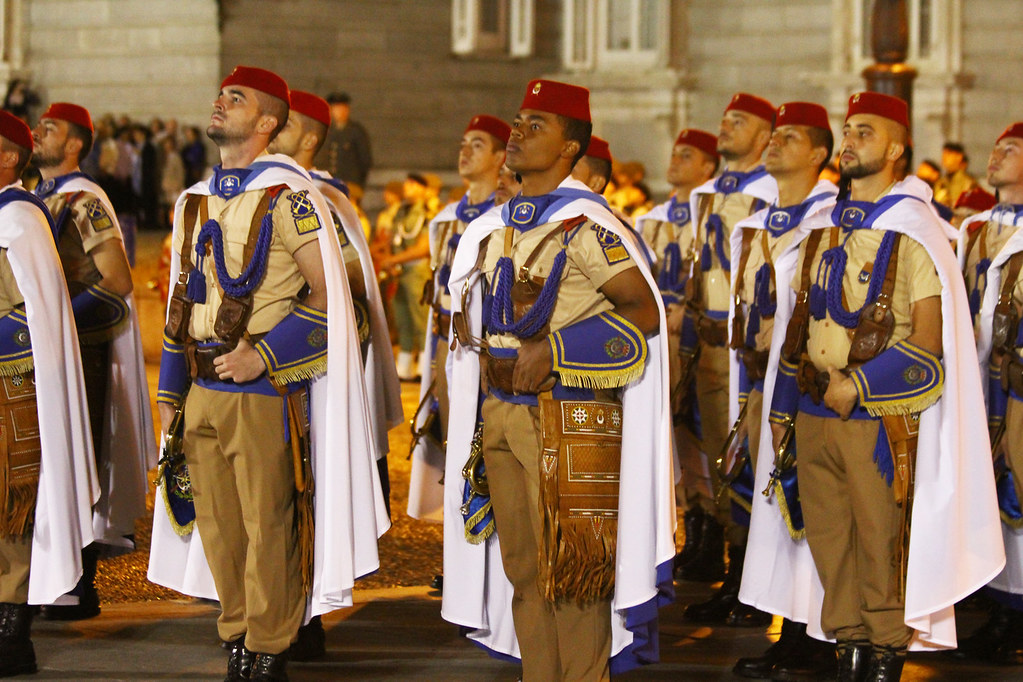The distinctive garments of the regulars of the Spanish Army explained by two soldiers
Spain is the only country in the European Union whose sovereign territory is in Europe and Africa, a fact that is reflected in its Armed Forces.
Among the different military units created within the Spanish Army with personnel born in its African territories we must highlight the Regular Indigenous Forces of Melilla, founded on June 30, 1911 and origin of the current Regular Forces.

The Spanish Army once had ten Groups of Regulars of infantry and two of cavalry, but today there are two: the Group of Regulars of Melilla No. 52, the most decorated unit of the Army (with 9 collective Laureates, 30 individual Laureates, 33 Collective Military Medals and 79 Individual Military Medals) and the Group of Ceuta Regulars No. 54, both based in the Spanish cities in North Africa that give them their name. In operations, these units use the same field uniforms as other Army units, that is, M09 Ejército pixelated woodland camouflage uniforms.

However, on military parades they wear very beautiful and colorful distinctive uniforms, inherited from the traditions of the Spanish indigenous units of North Africa. The Regular Forces are one of the four units of the Spanish Army with a specific uniform (the others are the Sea Companies, the Legion and the Parachute Brigade).

The distinctive garment par excellence of the regulars is the tarbuch, also called fez, a cylindrical red felt hat, made in a single piece and decorated with a black tassel and the emblem of the Regular Forces in the front: two crossed rifles (because it is a light infantry unit), a crescent and the Royal Crown. The tarbuch was the first distinctive garment of the Regular Forces and, just as the legionaries do with their "chapiris", the regulars also usually use the tarbuch with their field uniforms.

In addition, the regulars wear a chickpea-colored gala uniform, with a shirt in a lighter tone than the pants, in addition to wearing high-top black boots. The Regular Forces are the only unit of the Spanish Army that wears a cape, made up of two parts: the alquicel, white and lighter, and the sulham , a thicker layer that is red in the Regulares of Melilla and blue in the Regulares of Ceuta. In some celebrations, the green sulham is worn in honor of the Group of Regulars Alhucemas No. 5 or orange in memory of the Group of Regulars of Llano Amarillo No. 7.

The regulars wear a sash at their waist with tassels and fringes, blue in Ceuta and red in Melilla (although in the latter city the green sash is also sometimes used, inherited from the color used by the Group of Regulars No. 5 of Alhucemas). The distinctive garments are completed with the skara, a leather goods bag.

The Ministry of Defense has published an interesting video in which two soldiers from the Ceuta Regular Group No. 54 explain these garments and how they are placed (the video is in Spanish, you can activate the automatic English subtitles in the bottom bar of the player):
It should be noted that, in addition to the aforementioned clothing, the Regular Forces have other distinctive elements that give them their own identity. One of them is its majestic specific pace of 90 steps per minute, which is why the Regular Forces close all the foot parades of the Spanish Armed Forces, preceded by the Legion, which also has a specific step, but 160 steps per minute.

In addition, the Regular Forces have a distinctive musical instrument: the shawm, a conical-shaped wind instrument, made of wood and of medieval origin, with a very characteristic sound. On the other hand, the Regular Forces have their own terminology for some of their units, calling the battalion "tabor" and its music band, equipped with shawms, "nuba".

I dedicate this entry to my late maternal grandfather, who was a veteran of the Indigenous Regular Forces Group "Tetuán" No. 1.
|
Don't miss the news and content that interest you. Receive the free daily newsletter in your email: |
- Most read
- The 'hole' without civil flights around Paris during the opening of the Olympic Games
- Stunning footage of the F-15QA Ababil in flight recorded from its cockpit
- The firearms used by the Pontifical Swiss Guard, the smallest army in the world
- Eurofighter vs F-35: the opinions of professional pilots on these advanced fighters
- The first photo of an F-16 fighter with Ukrainian insignia and the details it has revealed
- The most distant deployment of the Spanish Air Force in Australia and New Zealand
- This is the driver station of an M1 Abrams tank and the impressive start of its engine

 ES
ES







Opina sobre esta entrada: